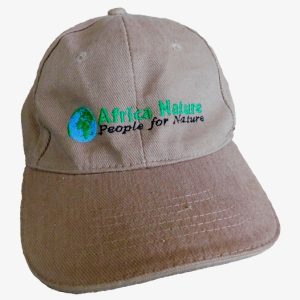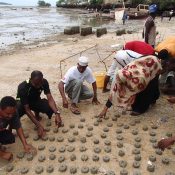Subtotal: $5.00

CORAL GARDENING – A New Approach to Coral Reef Restoration
Mr. Abdalla Omar Juma (article writer) is the Secretary to the Wasini Beach Management Unit, a community-based institution established through the Fisheries Management and Development Act in Kenya.
The ocean and its vast resources are always fascinating. It is believed that its mysteries are yet to be fully discovered compared to what we already know of the terrestrial natural resources. But there is one thing that we all clearly know, that humans have continuously degraded the oceans to alarming levels through various forms of pollution including oil spills and plastics.
Despite the unhealthy state of our oceans, they have continued to produce goods and services that support life on Planet Earth. The integrity and productivity of the oceans has received a major boost with the discovery of a new evolving technique of restoring degraded marine ecological areas through coral gardening.
The Wasini island community are among the first in Africa to pilot coral translating, combining indigenous and scientific knowledge to grow pieces of corals in a nursery set up before transplanting onto degraded coral sites. They were supported by Africa Nature Organization (ANO), the Kenya Marine and Fisheries Research Institute (KeMFRI) and the State Department of Fisheries (SDF).
Healthy coral reefs are among the ocean’s most diverse and ecologically important habitats. They provide numerous socio-economic, ecological, aesthetic and cultural values. They also form an important breeding ground and refuge for fish and other living organisms in the ocean.
Corals have, over the years, declined due to human activities such as pollution, unsustainable fishing methods, as well as the effects of global climatic changes. Corals are easily stressed by increasing ocean temperatures, ocean acidification, shifting of ocean currents, rise in ultraviolet light concentration, silt deposition and wave damage. The impact of these factors is manifested as coral bleaches, coral mortality, reduced reproductive capacity and increased vulnerability to coral diseases.
The coral gardening process bypasses early growth stages, when corals are vulnerable, by growing corals in nurseries that are later replanted on selected degraded coral reef sites. Coral gardening is now being used as an alternative adaptive tool to manage and restore degraded coral reefs.
There are 10 steps that are used in the coral reef restoration programme at Wasini Island. These are: -
- Sensitization of the community on the need for coral reef restoration;
- Identification of degraded reefs areas through participatory mapping, zonation and prioritization of actions. The areas were subdivided into coral reef restoration zone, the resource use zone and the visitor use zone;
- Baseline survey of the targeted site for conservation was done before any restoration activity began. The survey gathered information on fish types and abundance, description of sea floor, depth, wave intensity, tidal currents, turbidity, salinity, nutrients, amount of sediments as well as the socio-economic activities such as fisheries and tourism;
- Coral species and donor sites – the sources of coral fragments for propagation at the nursery - were identified to ensure diverse group of coral species with different growth forms were collected;
- Community and other stakeholders were trained to establish a pool of skilled local communities for effective and sustained coral reef restoration. The training covered topics on sourcing corals, establishment of coral nursery beds, management of healthy nursery beds, coral transplanting to degraded or artificial reefs and, maintenance and monitoring operations after transplanting;
- After the training, coral nursery sites were selected and the construction of nursery beds and concrete blocks were completed;
- Coral fragments were gathered from donor sites to the established nursery beds;
- Regular monitoring of nursery grown coral fragments was undertaken to measure the growth, survival and health of coral fragments at least once a month. Other operations involved the cleaning of coral fragments using a brush to improve growth and survival at least once a week for the first 3 months and then cleaning of algal growth fortnightly or monthly. Maintenance also involved removal of coral predators such as gastropods and achinoderms, fowling algae, sediments and other debris;
- Nursery grown corals were transplanted to degraded or artificial reefs. This was done after 3-12 months depending on the health of the fragments, securely fixed on the bare substrate of degraded reefs or onto artificial reefs. Self attachment to the reef takes 1-2 months, aided by ensuring sufficient contact between live coral tissue and reef substrate. Marine cement was used to attach the coral to the substrate;
- The growth and survival of out-planted corals was measured. Out-planted corals were scored on whether alive, bleached, diseased or dead. Cleaning of coral fragments was done fortnightly until coral colonies had successfully affixed on the substrate and could be left to grow on their own. Ecological monitoring is also being done using protocols used in baseline survey. For fish abundance belt transects are repeated 6, 12 and 24 months after the first corals had been transplanted. Point intercept was repeated 6, 12 and 24 months. Socio-economic monitoring is also being done to assess whether local communities are benefiting from the restoration activities.
There are currently notable improvements and benefits that the community have realized from the coral garden. There is increased fish abundance, increased tourist traffic and in increase in interest from learning institutions, researchers and other community groups along the coast eager to learn and establish their own coral gardens.
After Wasini community successfully piloted this project, there are efforts to expand the coral gardens within Wasini Island and replicating the project in other suitable areas along the Kenyan coast.



